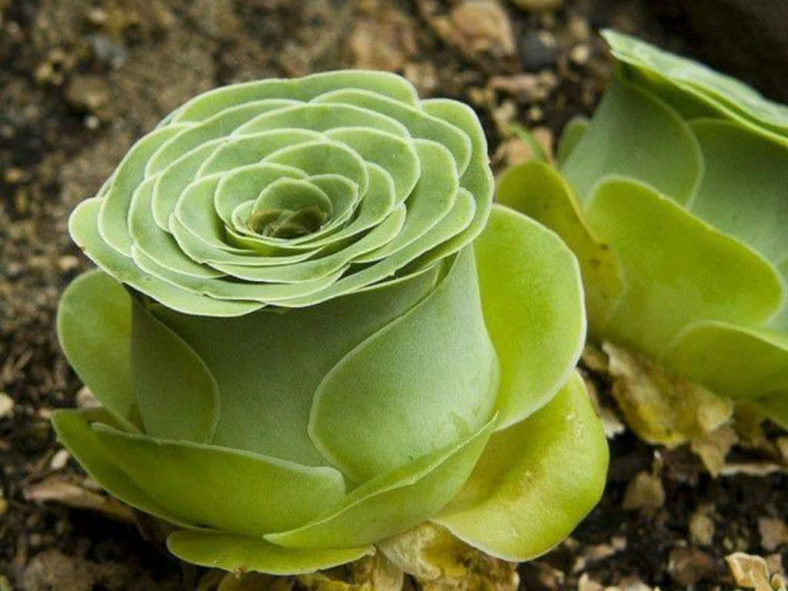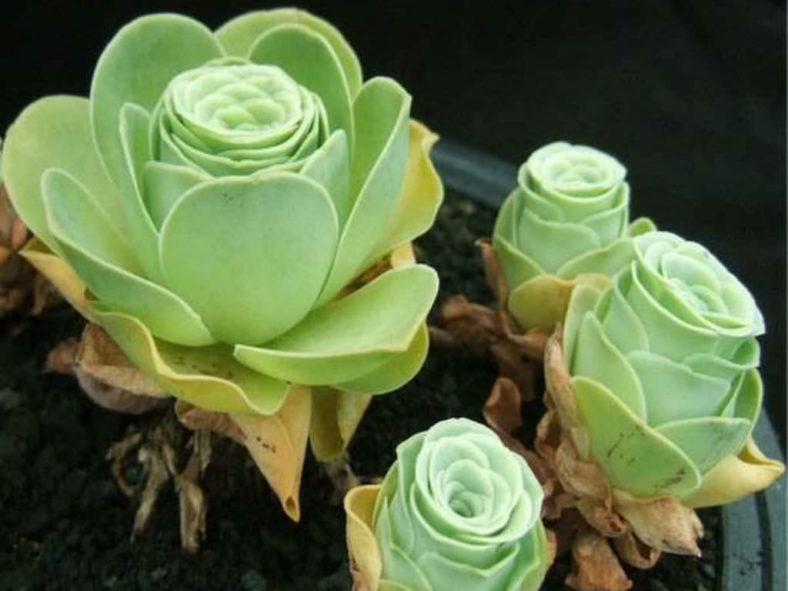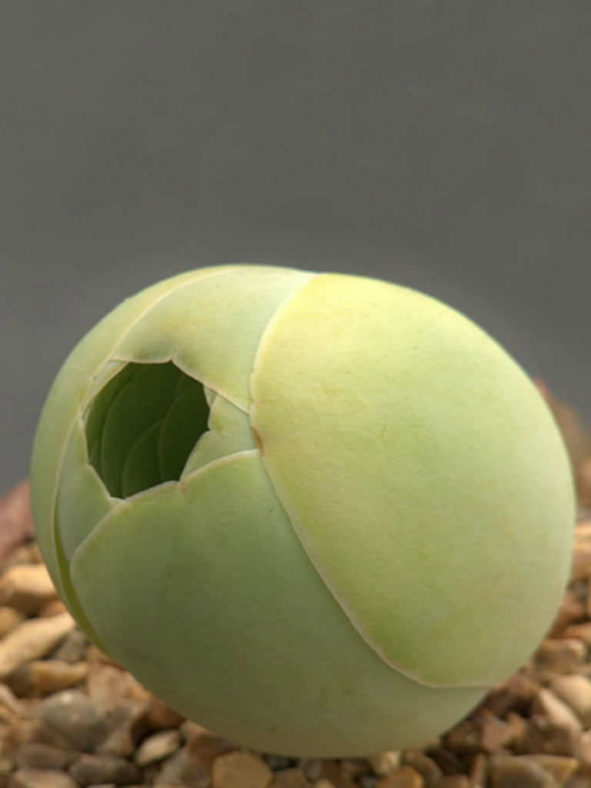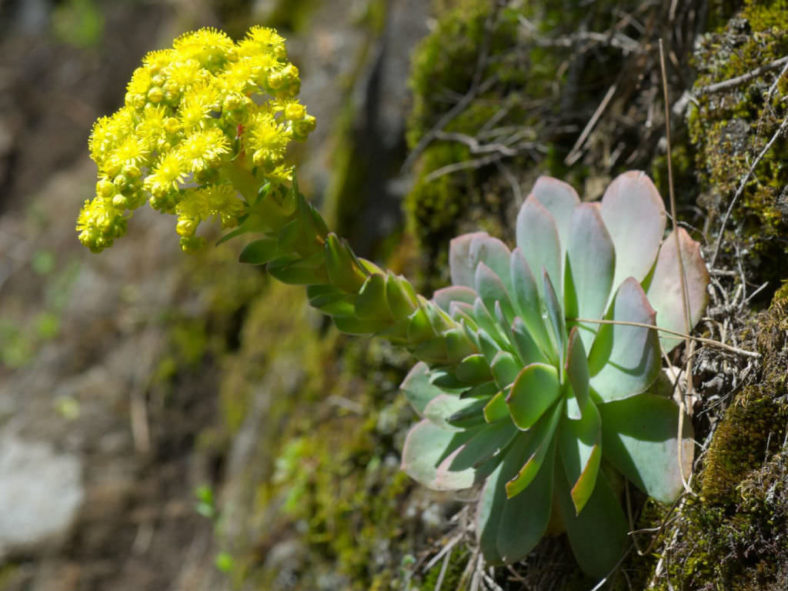Scientific Name
Aeonium aureum (C. Sm. ex Hornem.) T. Mes
Common Name(s)
Green Rose Buds
Synonym(s)
Sempervivum aureum, Greenovia aurea, Greenovia ferrea, Greenovia polypharmica, Greenovia rupifraga
Scientific Classification
Family: Crassulaceae
Subfamily: Sempervivoideae
Tribe: Aeonieae
Genus: Aeonium
Etymology
The specific epithet "aureum" (pronounced "AW-re-um") means "made of gold, golden; gold-colored" and refers to the color of the flowers of this species.
Origin
Aeonium aureum is native to the Canary Islands.
Description
Aeonium aureum, also known as Greenovia aurea, is an attractive succulent that forms a usually solitary rosette of pale apple-green leaves. The rosette can reach a diameter of 10 inches (25 cm). The leaves flush out in winter and close up in tight, rounded balls in summer.
The mature rosette sends up an erect, stiff inflorescence of deep yellow flowers.
This species is very similar to Aeonium dodrantale, but it has a larger rosette and usually does not form offsets unless it is a hybrid with A. dodrantale.

Hardiness
USDA hardiness zones 10a to 11b: from 30°F (-1.1°C) to 50°F (10°C).
How to Grow and Care
Aeoniums do not like hot or dry weather. Therefore, they may go dormant in summer and do not require any water, except in arid conditions. In extreme heat, their leaves will curl to prevent excessive water loss. Growing them in moist shade will keep them growing, but their true growth season is winter to spring, when temperatures are cool, 65°F to 75°F (18°C to 24°C), and damp. In the winter, water whenever the soil has dried out. Test by poking your finger down into the soil an inch or two (2.5 to 5 cm). Too much moisture or allowing them to sit in wet soil will cause root rot.
A sandy loam or regular potting mix is better than a mix specifically for cacti and succulents, since Aeonium needs some moisture. If you are growing them in containers, repot every 2 to 3 years with fresh potting soil.
Feed during the growing season with a half-strength balanced fertilizer every month or so. Do not feed while the plant is dormant.
Learn more at How to Grow and Care for Aeonium.
Links
- Back to genus Aeonium
- Succupedia: Browse succulents by Scientific Name, Common Name, Genus, Family, USDA Hardiness Zone, Origin, or cacti by Genus
Photo Gallery
Click on a photo to see a larger version.


